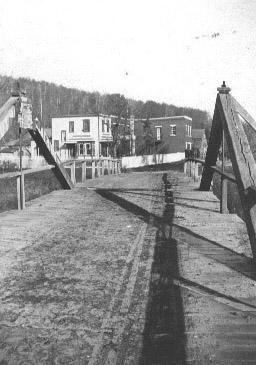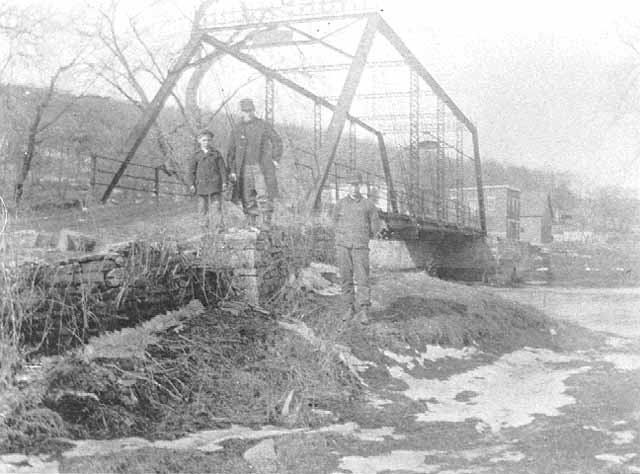

Historic Bridge
Built in 1899, the Forestville bridge provided residents a safe and reliable way of crossing the river. The bridge may be one of the oldest surviving bridges in the country and is currently undergoing rehabilitation work.
Restoration begins
On November 14, 2023, crews completed the delicate task of moving the historic bridge on County Road 118. While the historic bridge undergoes rehabilitation work, a temporary bridge will be put in place to restore access to Historic Forestville.
This is a joint project between Fillmore County, the Minnesota Department of Natural Resources, and the Minnesota Historical Society. The goal is to repair and rehabilitate the bridge–while maintaining its historic character–in its temporary location before moving it back to its original location in the future.
Watch a video of the bridge’s move on November 14, 2023.
History of the bridge
The Root River, a tributary of the Upper Mississippi River, flows for 80 miles through several towns of southeastern Minnesota, including Rushford, Preston, and of course, Forestville. This river crossing at Forestville saw the evolution of three separate bridges over time. In 1856, three residents—William Renslow, Gilbert Bassett, and William Meighen—contracted fellow newcomer Major Foster to construct a bridge directly across from the Fremont House, the town's first hotel. He built a rugged bridge in the King’s Post style, made out of native white oak. They completed the project on May 6, 1856. The bridge lasted for 32 years until 1888, when floods washed it away.
The townspeople quickly erected a new bridge in the same location. They built it in the same King’s Post style as the original bridge, and they used a heavy timber construction and wood plank flooring. This time, they included a broadside, or advertisement, near the top of the left supporting truss advertising products in the town store. This second bridge lasted until 1898.
The Gillette-Hertzog Manufacturing Company of Minneapolis constructed the third bridge at the Forestville crossing during the spring of 1899. This new structure and a matching bridge constructed a mile to the south were the last construction projects of the 19th century at Forestville. The bridges were funded entirely by Forestville Township residents.
The bridge's structural members were made of Carnegie steel fitted with wood plank decking. Placed across two dressed limestone piers, the bridge cut an impressive figure and signaled a somewhat tardy arrival of the Gilded Age to Forestville. The bridge was turned over to Fillmore County in the 1970s and may be be the oldest surviving bridge in the county.
Apart from the trees that have since grown up on both sides of the river, this view has remained relatively unchanged.



